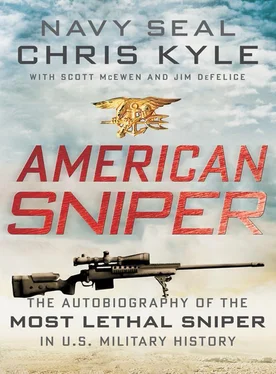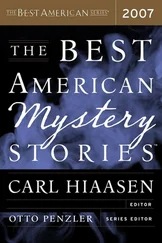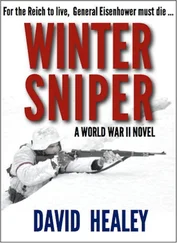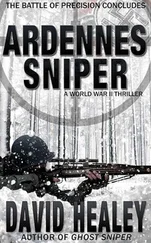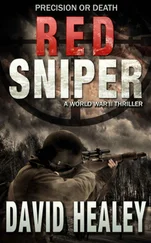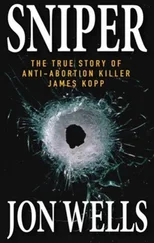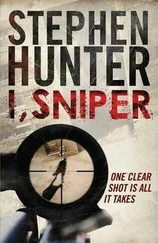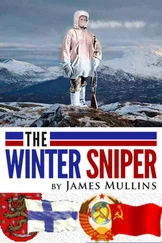As a SEAL, I used Nightforce scopes. They have very clear glass, and they’re extremely durable under terrible conditions. They always held their zero for me. On deployments, I used a Leica range finder to determine how far I was from a target.
Most of the stocks on my guns used adjustable cheek-pieces. Sometimes called a comb (technically, the comb is the top piece of the stock, but the terms are sometimes interchanged), the extension let me keep my eye in position when sighting through the scope. On older weapons, we would adapt a piece of hard-packed foam and raise the stock to the right height. (As scope rings have gotten larger and more varied in size, the ability to change the stock height has become more important.)
I used a two-pound trigger on my rifles. That’s a fairly light pull. I want the trigger to surprise me every time; I don’t want to jerk the gun as I fire. I want no resistance:
Get set, get ready, put my finger and gently start squeezing, and it goes off.
As a hunter, I knew how to shoot, how to make the bullet go from point A to point B. Sniper school taught me the science behind it all. One of the more interesting facts is that the barrel of a rifle cannot touch any part of the stock: they need to be free-floating to increase accuracy. (The barrel will “float” in the stock, due to the way the stock is cut out. It attaches only to the main body of the rifle.) When you shoot a round, a vibration comes through the barrel, known as barrel whip. Anything touching the barrel will affect that vibration, and, in turn, affect the accuracy. Then there are things like the Coriolis effect, which has to do with the rotation of the earth and the effect it has on a rifle bullet. (This comes into play only at extremely long distances.)
You live all of this technical data in sniper school. You learn about how far to lead someone when they’re moving—if they’re walking, if they’re running, depending on the distance. You keep doing it until the understanding is embedded not just in your brain but in your arms and hands and fingers.
In most shooting situations, I adjust for elevation, but not for windage. (Simply put, adjusting for elevation means adjusting my aim to compensate for the drop of my bullet over the distance it travels; windage means compensating for the effect of the wind.) The wind is constantly changing. So about the time I adjust for wind, the wind changes. Elevation is a different story—though if you’re in a combat situation, a lot of times you don’t have the luxury of making a fine adjustment. You have to shoot or be shot.
Iwas not the best sniper in my class. In fact, I failed the practice test. That meant potentially washing out of the class.
Unlike the Marines, in the field we don’t work with spotters. The SEAL philosophy is, basically, if you have a fellow warrior with you, he ought to be shooting, not watching. That said, we did use spotters in training.
After I failed the test, the instructor went through everything with me and my spotter, trying to figure out where I’d gone wrong. My scope was perfect, my dope was set, there was nothing mechanically wrong with the rifle…
Suddenly, he looked up at me.
“Dip?” he said, more a statement than a question.
“Oh…”
I hadn’t put any chewing tobacco in my mouth during the test. It was the only thing I’d done differently… and it turned out to be the key. I passed the exam with flying colors—and a wad of tobacco in my cheek
Snipers as a breed tend to be superstitious. We’re like baseball players with our little rituals and must-dos. Watch a baseball game, and you’ll see a batter always does the same thing as he steps to the plate—he’ll make the sign of the cross, kick the dirt, wave the bat. Snipers are the same way.
During training and even afterward, I kept my guns a certain way, wore the same clothes, had everything arranged precisely the same. It’s all a matter of controlling everything on my end. I know the gun is going to do its job. I need to make sure I do mine.
There’s a lot more to being a SEAL sniper than shooting. As training progressed, I was taught to study the terrain and the surroundings. I learned to see things with a sniper’s eye.
If I were trying to kill me, where would I set up?
That roof. I could take the whole squad from there.
Once I identified those spots, I’d spend more time looking at them. I had excellent vision going into the course, but it wasn’t so much seeing as learning to perceive—knowing what sort of movement should get your attention, discerning subtle shapes that can tip off a waiting ambush.
I had to practice to stay sharp. Observation is hard work. I’d go outside and just train myself to spot things in the distance. I always tried to hone my craft, even on leave. On a ranch in Texas, you see animals, birds—you learn to look in the distance and spot movement, shapes, little inconsistencies in the landscape.
For a while, it seemed like everything I did helped train me, even video games. I had a little handheld mahjongg game that a friend of mine had given us as a wedding present. I don’t know if it was exactly appropriate as a wedding present—it’s a handheld, one-person game—but as a training tool it was invaluable. In mahjongg, you scan different tiles, looking for matches. I would play timed sessions against the computer, working to sharpen my observation skills.
Isaid it before and I’ll keep saying it: I’m not the best shot in the world. There were plenty of guys better than me, even in that class. I only graduated about middle of the pack.
As it happened, the guy who was the honor man or best in our class was part of our platoon. He never had as many kills as I did, though, at least partly because he was sent to the Philippines for a few months while I spent my time in Iraq. You need skill to be a sniper, but you also need opportunity. And luck.
Beaten by Dolphins, Eaten by Sharks
After spending the entire summer at sniper school, I returned to my platoon and got busy with the rest of our workup, going through the different training sessions as we prepared to deploy in a year. As usual, I had some of my hardest times in the water.
Everyone gets all warm and fuzzy about marine animals, but I’ve had close and personal encounters that were anything but.
While the Navy was testing a program using dolphins for harbor defense, they used us as targets, in a few cases without warning. The dolphins would come out and beat the shit out of us. They were trained to hit in the sides, and they could crack ribs. And if you hadn’t been warned in advance of the exercise, you didn’t know what was going on—your first reaction, or at least mine, was to think you were being attacked by sharks.
One time we were out and the dolphins were taking it to us. Getting beaten bad, I headed toward shore to dodge the bastards. Spotting some piers, I ducked underneath—I knew they wouldn’t follow me.
Safe.
All of a sudden, something clamped hard on my leg. Hard.
It was a sea lion. They were being trained to guard the piers.
I went back out into open water. I’d rather be beaten by a dolphin than eaten by a sea lion.
But sharks were, by far, the worst.
One evening, we were supposed to swim across the bay off San Diego, in the dark, and plant a limpet mine on a particular ship. Simple, standard SEAL operation.
Not every SEAL hates the water like I do. In fact, a lot of them like it so much they’ll swim around and play tricks on the others in the exercise. You might have a guy plant his mine, then sink to the bottom and wsait for the next guy to come over with his. There’s usually enough light from above that the second diver is silhouetted and easy to see. So when the victim—I mean, diver—comes to plant his mine, the first diver comes up, grabs his fin, and jerks it.
Читать дальше
